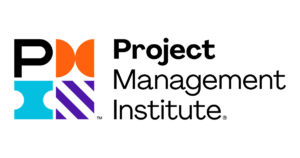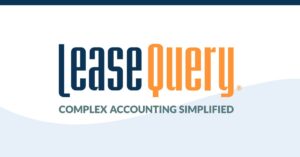5 minute read
This article shows how three companies were able to uncover and solve market problems, all while improving the customer experience and supporting business objectives.
Products should solve market problems. If they don’t, you only have a product that might be neat but isn’t useful or profitable. But building products that solve problems isn’t as easy as it might sound. After all, to solve them you must first identify problems that people are willing to pay money to solve.
Exactly how do companies evaluate market problems and build the right solution? The answer is to listen and research. This might seem deceptively simple, but what does it look like in practice?
The following three case studies show how different organizations discovered market problems and designed effective solutions.
Read them all or skip to the case study that interests you the most:
- Case Study 1: Project Management Institute
- Case Study 2: LeaseQuery (FinQuery)
- Case Study 3: Pragmatic
Case Study #1
The Market Problem: Career Path Uncertainty
Project Management Institute (PMI) is a not-for-profit professional association that focuses on advancing the field of product management.
Many PMI’s members are advanced in their careers, but they have a large segment of members that are just beginning their journey into the field of project management. It was in this segment that PMI noticed an emerging market problem.
Those early in their career were swimming in a sea of information but facing an ocean of uncertainty. They knew they wanted to advance their careers as project managers, but getting there was cumbersome and ambiguous. Searching online yielded lots of results but no clear path, leaving them to wonder what information was accurate and what actually applied to them.
The market problem was that for project managers, no career trajectory is entirely linear, and there is no standardized approach to reaching the next milestone.
Market Problem Discovery Via Lemonade Stands
PMI has chapters of various sizes around the globe. Each one has the same mission, which is to help organizations and individuals work smarter at every stage of their career.
At the chapter level, the organization became aware of the need for more reputable resources for those just starting their project management careers. In response, product manager Kerry Brooks deployed teams to set up lemonade stands at events and outside chapter meetings to ask questions about the issue.
The qualitative feedback they received helped them understand the problem and come up with a solution. In this situation, the solution was a platform to help users understand their career options and create a plan to reach their goals.
After they built concepts and landing pages, they were able to A/B test messaging and conduct surveys and better understand the difference between their “say data” and “do data.”
“Say data” is what people say they want, and “do data” is how their audience acted when a solution was presented.
The qualitative and quantitative data helped them validate and launch their solution to the public.
Market Problem Solution: PMI Navigator Career Platform
The PMI Navigator Career Platform allows users to build a profile and select one to three near-term goals. They will then receive a custom-built roadmap designed to lead them to their next career milestone.
The roadmap is full of actionable resources like events they should attend, podcasts they should listen to, books and articles they should read, etc. Once they complete a goal, they can move on to the next.
This solution solved the problem of ambiguity by giving the users clear directions on what content was valuable and the next steps to take.
Case Study #2
The Market Problem: New Lease Accounting Standards
A lease is an agreement between a property owner and a person who wants to use the asset. Lease accounting is the process of recording the financial impacts of leasing activities in accounting reports.
During the last four years, the Financial Accounting Standards Board released new standards for this type of accounting. The market problem was that the current accounting software couldn’t accommodate these new standards.
LeaseQuery, now known as FinQuery, was first on the scene with software that could manage these new standards. As with any product, being first isn’t a long-term competitive competency, so, they launched a market research strategy to help them expand their product and better serve their customers.
Market Problem Discovery Via Question Library
Customer interviews are a high-value activity when it comes to uncovering unmet needs and trends. But, LeaseQuery took a systematic approach to this work. Product manager Joy McCaffrey created a bank of questions to ensure consistency in her research efforts.
She collected these ideas for questions during meetings, blogs and webinars, and tagged them based on their purpose. For example, questions were tagged as exploratory, product-specific, market-specific, software-specific and company.
She organized interviews with customers, non-customers, channel partners and the target market. And she also structured every interview to include quantitative close-ended questions and qualitative open-ended questions.
The pre-established question library gives her a variety of directions she can take conversations while still providing a format to uncover themes and patterns efficiently.
Market Problem Solution: Launching New Products
In addition to solving the problem of not having lease accounting software that helps users navigate new standards, these interviews inspired the company to expand its product offering in the future. Through this work, she was able to identify opportunities as well as disqualified ideas.
Case Study #3
The Market Problem: Applying New Knowledge to Real-World Situations
n May 2020, Pragmatic Institute launched the Pragmatic Alumni Community (PAC). However, the work of building this community began a year prior when the leadership realized there was a market problem. Alumni were looking for resources to help them apply their new knowledge to their job after completing a course.
To uncover more insights into this problem, Pragmatic hired Georgina Donahue as the first director of community. She approached the problem just like any product manager would, understanding the market problem because “Community management is product management.”
Market Problem Discovery Via Internal and External Conversations
The goal was to find where organizational objectives and alumni needs overlapped. This is challenging because a community won’t succeed, even if members love it, if it doesn’t also support the company’s goals. When it comes to choosing what to invest in and what to cut, it’s hard to make a business case for something that isn’t fueling progress. Similarly, a community that is perfectly aligned with company goals but isn’t helpful to members will quickly become a ghost town.
Qualitative and quantitative research was used to discover this intersection. The research was designed to understand what features of a community would make training more valuable and to understand how it’d integrate into other organizational initiatives.
Interviews were conducted with 20 internal stakeholders and 20 alumni, followed by a survey with 400 respondents. The team continues to survey and listen to the community to improve and add features to the platform.
Market Problem Solution: No Question Left Behind
The research uncovered that both groups were interested in the practical application of theory. Of course, Pragmatic Institute wants students to have the support they need to put their training to work in their jobs, and students were seeking use cases.
The community has a motto: “No Question Left Behind.” It grew to 20,000 members in less than two years, and the fuel of that growth is peer-to-peer conversations. Community members can join cohorts based on areas of interest and industries, so conversations are always relevant.
Most importantly, every question in the PAC is answered by professionals and peers who share their experiences, examples, templates, resources and best practices.
By consistently uncovering and addressing market problems, businesses can ensure they remain relevant, customer-centric and poised for long-term success. These case studies illustrate how these three companies were able to uncover and solve problems in a way that improved the customer experience and supported business objectives. By adopting a similar approach, your business can enhance customer satisfaction, drive innovation, and achieve sustainable growth.
Author
-

The Pragmatic Editorial Team comprises a diverse team of writers, researchers, and subject matter experts. We are trained to share Pragmatic Institute’s insights and useful information to guide product, data, and design professionals on their career development journeys. Pragmatic Institute is the global leader in Product, Data, and Design training and certification programs for working professionals. Since 1993, we’ve issued over 250,000 product management and product marketing certifications to professionals at companies around the globe. For questions or inquiries, please contact [email protected].
View all posts











